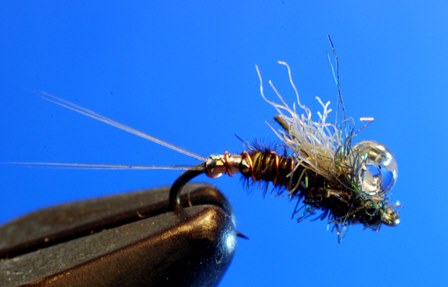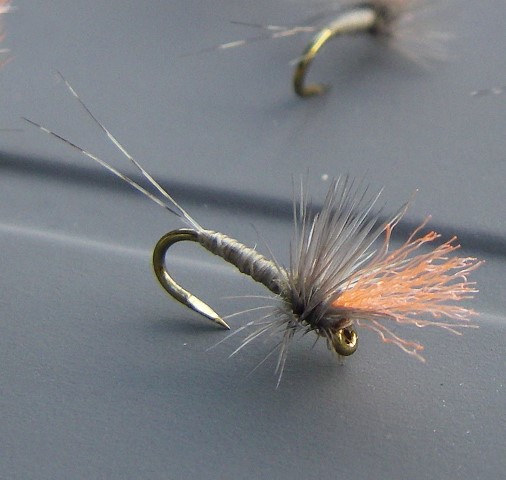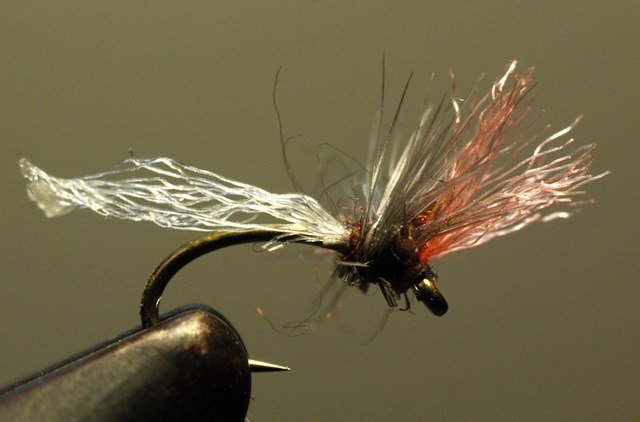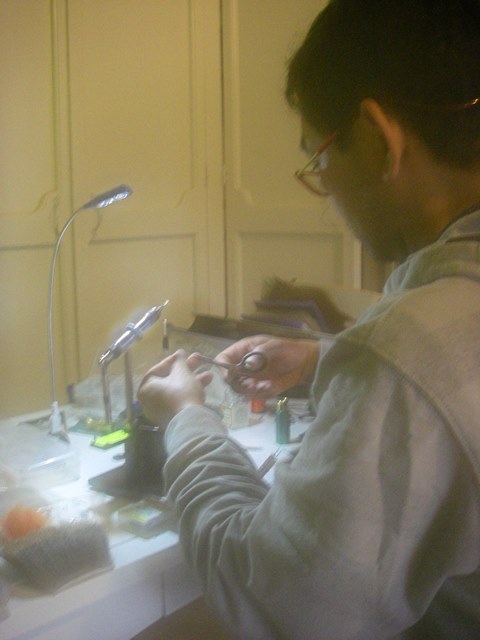REFINEMENT LEADING TO THRIFTY DESIGN
/Here’s a new incarnation of a Blue-winged Olive emerger pattern I came up with a several years ago. I don’t know why, but I’m always fooling around with this fly trying to reduce it to a primal essence. I tie other patterns that I haven’t messed with for decades. It’s weird how that happens
My idea for this BWO emerger design has always been to imitate the mayfly at the moment it’s struggling to emerge from its nymphal shuck. The silver-lined glass bead mounted on top of the hook represents the wings just as they are popping out of the shuck. They really do look like a silvery/clear ball at that moment. The silver tag at the rear of the hook imitates the highly reflective air (gases?) left in the shuck as the mayfly pulls out of it.
If you’ve watched me tie flies at the Fly Fishing Shows you’ll know that most recently I’ve been tying this pattern with a very sparse parachute hackle wound around the base of the bead. The point of the hackle wasn’t to float the fly for the entire drift, but only to slow it down a bit when it began to sink. In practice, I’d trim the hackle off or at least thin it even more if I wanted the fly to sink faster.
A few nights ago at the tying bench it occurred to me that I could get the same effect by just adding a bit of polypropylene or similar synthetic as a stubby, sparse “wing”. I ended up settling on Light Gray Para Post wing material mainly because I had some on hand.
The same rules apply when I fish this newest incarnation. If I want the emerger to sink more quickly I just trim the wing back or off altogether. The advantage of this version of the emerger is that it’s more visible on the water and I don’t have to feel guilty about wasting a perfectly good dry fly hackle simply to slow the fly down when it begins to sink. The Para Post material also makes the fly easier to tie.
Refinement that leads to thrifty design is where it’s at for me, but I seldom achieve it on the first try and I’m sure this latest incarnation won’t be the last.
FLY RECIPE
HOOK: TMC 200, size 20.
THREAD: Black.
TAILS: Gray synthetic tailing fibers.
TAG: Holographic tinsel.
RIB: Copper, size small.
ABDOMEN: Olive Pheasant tail.
WING: Light Gray, Hareline Para Post Wing.
THORAX: Hareline Peacock ICE Dub.
BEAD: Spirit River, Hi-Lite Glass Bead, Crystal, size small.























